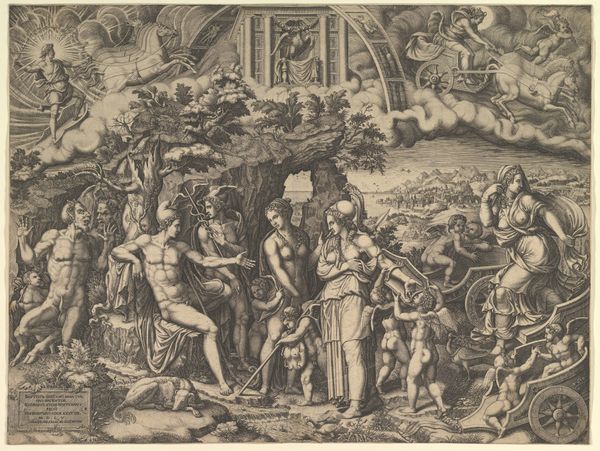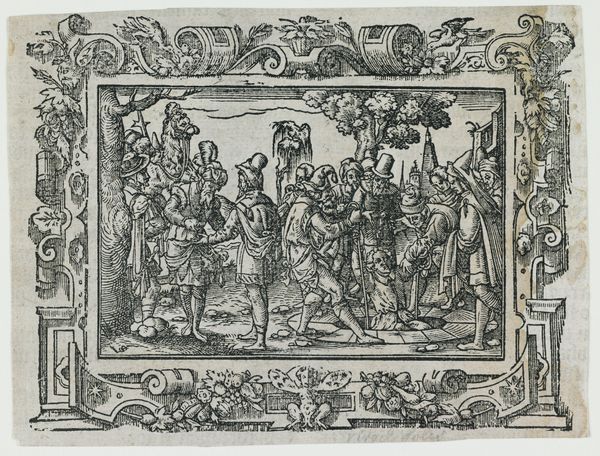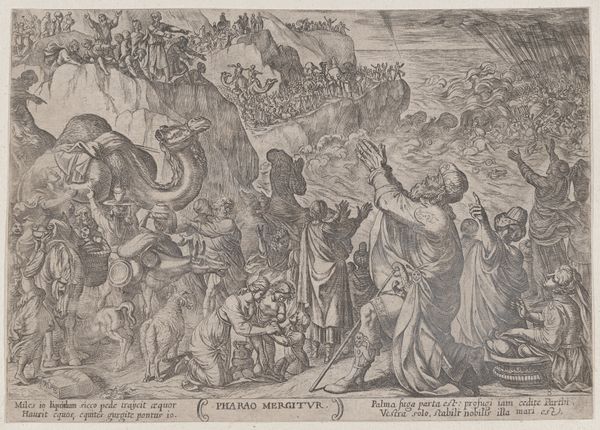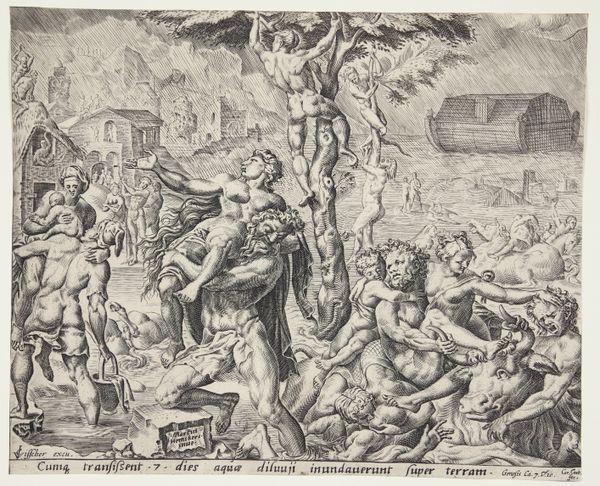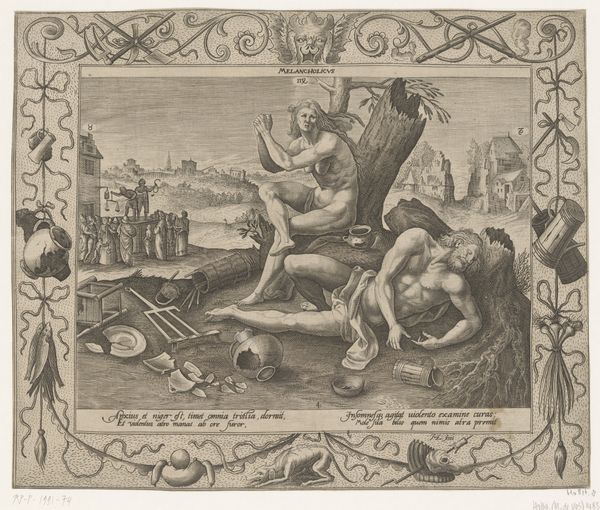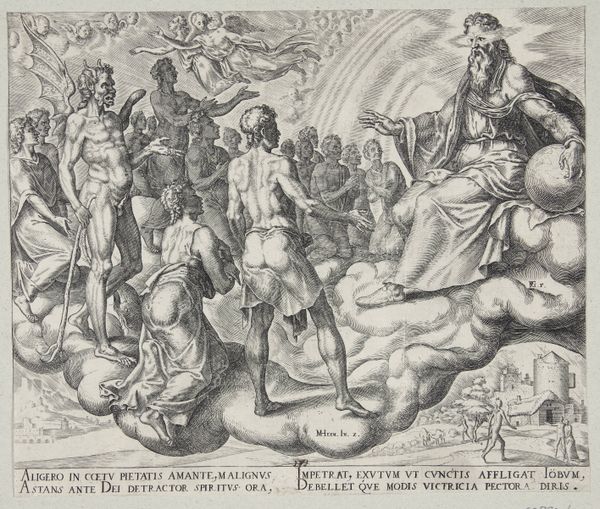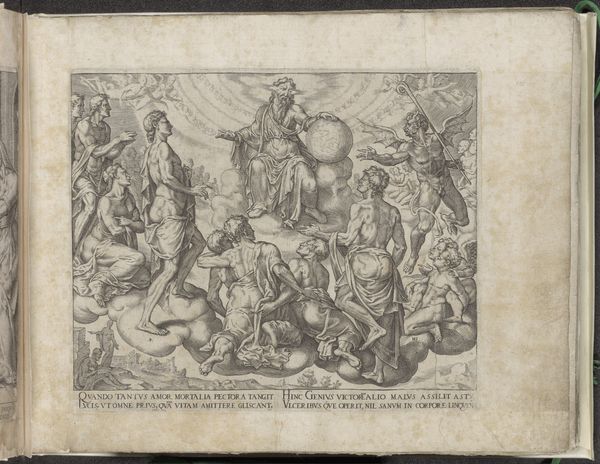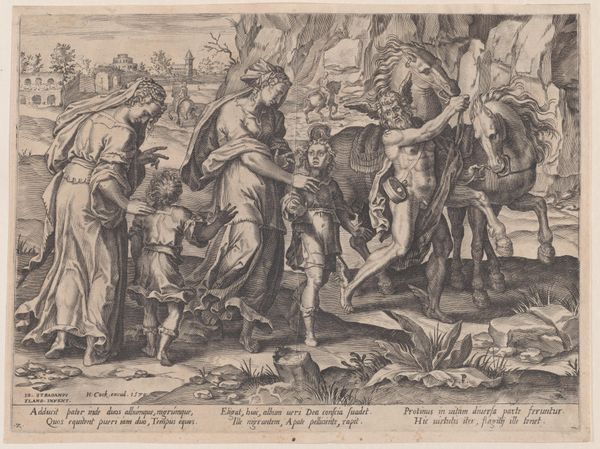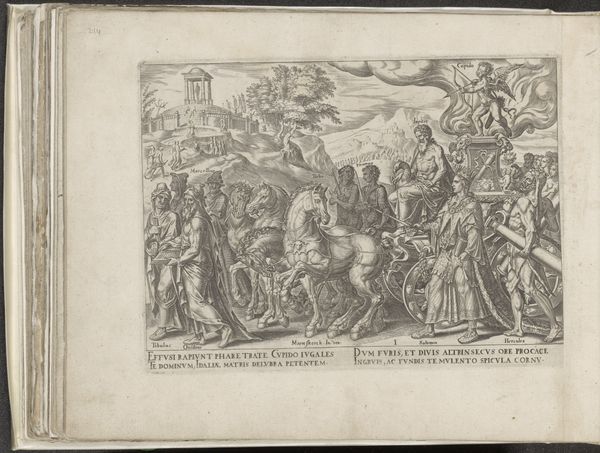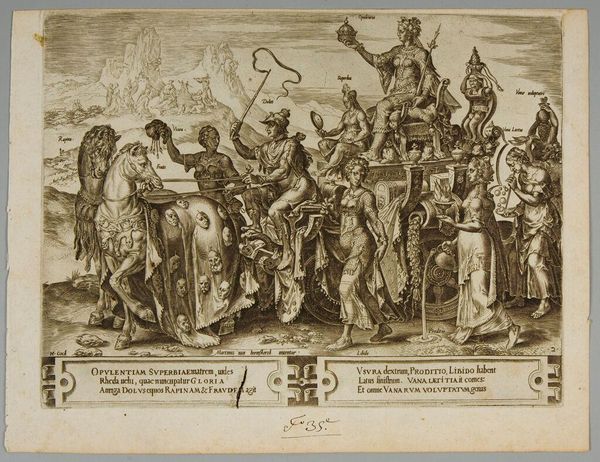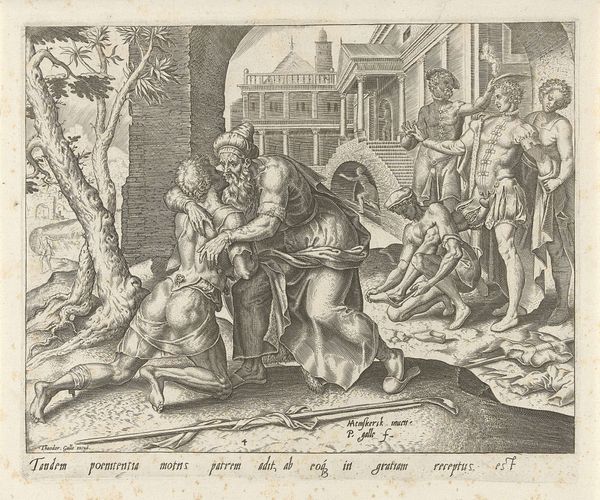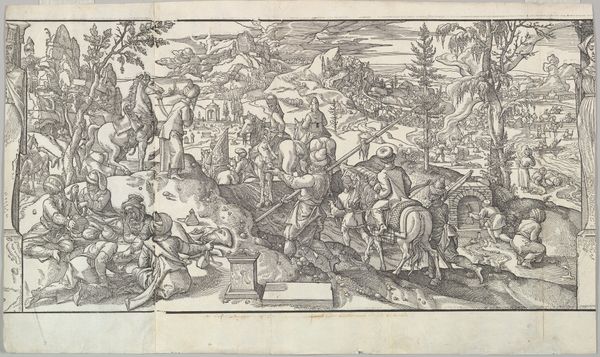
print, engraving
#
allegory
# print
#
figuration
#
11_renaissance
#
line
#
history-painting
#
italian-renaissance
#
engraving
Dimensions: 195 mm (height) x 264 mm (width) (plademaal)
Curator: Let’s discuss "The Triumph of Love," an engraving by Philips Galle, created sometime between 1563 and 1566. It’s part of the collection here at the SMK, the National Gallery of Denmark. Editor: My first impression is of a rather ordered chaos. It's meticulously rendered, almost like a stage production, but there are so many figures and details vying for attention. It seems crowded, but not necessarily in a bad way. Curator: Precisely! It depicts a procession, a triumphal march, where Cupid, the god of love, is the central figure, elevated on a pedestal above Jupiter. Observe how Cupid’s authority transcends even the king of the gods, embodying the all-conquering power of love. Editor: And you see this echoed through all the other historical and mythical figures pulled into his orbit? It’s like he’s commandeered figures across eras. Is that Solomon I see, and Hercules lumbering at the chariot's side? What's the statement it's trying to make? Curator: It’s allegorical, tracing the history of Love as perceived during the Renaissance and, possibly, drawing upon elements of ancient Roman Triumphs to elevate the concept of love to a symbol of social and cosmic importance. Note the presence of writers like Ovid – Love inspires even intellect. Editor: It also raises some complex questions about love itself. With figures like Jupiter—notorious for his... infidelities, let's say—participating in Cupid’s triumph, does that suggest a more nuanced understanding of love, not just pure and innocent? There seems to be some suggestion of force as the old figures look so miserable! Curator: The symbols aren’t simple moral proclamations, but attempts to contain, within an image, the entire cultural weight, social reach, and psychological implications of Love, with a capital 'L', during that time. So, indeed, complexities and tensions. Even what appears at first chaotic, when read, provides clear insights into that era. Editor: It really makes you consider the political dimensions of love too, especially its deployment to cement power or destabilize the status quo. Thank you, this has reframed how I viewed it. Curator: It's amazing to think an artwork composed of seemingly simple lines could carry the emotional weight and convey cultural history across centuries.
Comments
No comments
Be the first to comment and join the conversation on the ultimate creative platform.
